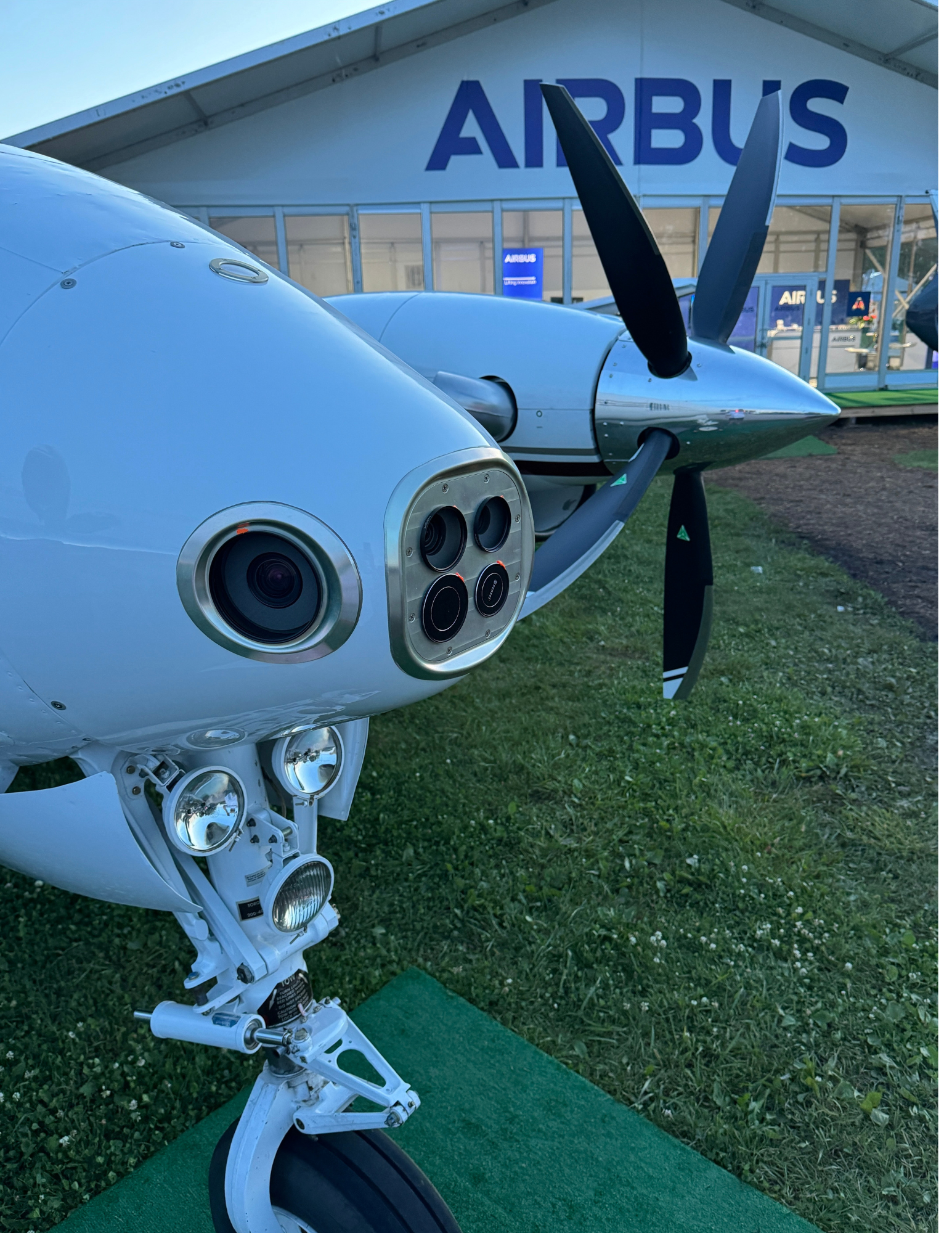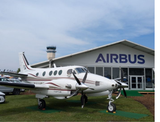June 28,2025
Visitors to this year’s EAA AirVenture Oshkosh may have done a double take at the sight of a King Air C90 parked front and center at the Airbus tent, a surprising scene for anyone familiar with the usual display lineups. But this eye-catching juxtaposition is no accident. It’s part of Airbus’s cutting-edge “Wayfinder” project, a program focused on developing certifiable autonomy systems for the next generation of commercial aircraft.
The aircraft in question is a highly modified King Air C90, equipped with an array of sensors and 10 synchronized cameras, designed to collect runway and airport imagery across a broad range of conditions and locations. According to Paul Smith, director of flight test and operations for Acubed, Airbus’s Silicon Valley-based innovation arm, the data collected is being used to train machine learning algorithms that will one day help autonomous systems safely navigate the complex environment of airport operations.

The King Air is doing what it does best: being nimble and efficient. Its ability to fly frequent and varied patterns makes it an ideal testbed for Wayfinder’s autonomy development. The team is capturing video from four miles out to runway end, in daylight, at night, during dusk, and through degraded weather conditions, building a vast library of visual data. Smith explains, “Machine learning requires a lot of imagery and a lot of data. A pilot sees the runway and instinctively knows if they’re high, low, left, or right. I’ve got to teach a computer to do the same thing.”
The cameras even mimic the Airbus A320’s view: sensors mounted in the tail of the King Air sit 14 feet off the ground, the same height as the A320’s belly. This configuration helps align the visual dataset with what future autonomous airliners will encounter.
Beyond approaches, the team is collecting data on taxiways and airfield obstacles, a part of flight that often goes underappreciated in its complexity and risk. “Getting from the runway to the jetway is one of the most dangerous phases of flight,” Smith said. “We want to improve situational awareness, especially for newer pilots.”
Smith notes that situational awareness relies on three things: perception of the environment, a knowledge base of aviation systems and scenarios, and the judgment that comes from experience. But as seasoned pilots retire, that judgment is harder to come by. “That’s where intelligent automation comes in. We’re trying to build a system that helps fill the gap as pilot demographics shift.”
The promise of Wayfinder isn’t just in safety. It’s in efficiency, too. With air travel demand rising and airport infrastructure largely static, Smith sees opportunities to reduce delays through more stable, precise approaches. “If we can minimize go-arounds and balked landings, we can move more people through airports with the same number of runways.”
Still, there are hurdles ahead. The regulatory process for certifying AI-based systems remains a major challenge. “The problem with artificial intelligence is that it’s not deterministic,” Smith said. “Traditional systems like ILS give the same output every time. AI doesn’t, even when it’s right, it may get there a different way. That makes certification difficult.”
For now, Wayfinder remains in an open-loop phase, collecting data and testing performance without directly influencing aircraft operations. But the results, Smith says, are promising.
“It’s looking pretty good.”

